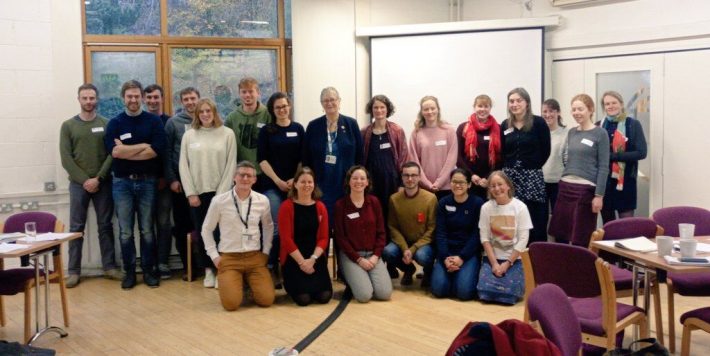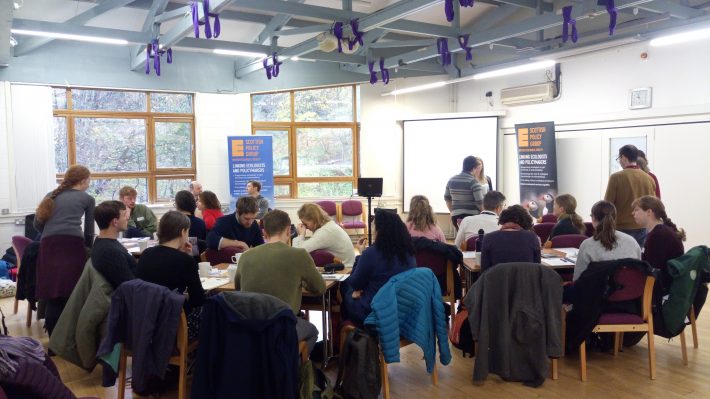Scottish Policy Group: Understanding the Science-Policy Interface in Scotland
An MSc student explains what she learned from attending the annual BES-SPG policy training day.

The session was a useful introduction to the Science-Policy interface in Scotland and a fantastic opportunity to hear from various speakers with differing roles in policy making.
I was interested in attending after going along to a couple of Cross Party Groups on Rural Policy at the Scottish Parliament. This made me realise how much I still had to learn about the workings of the Scottish Parliament and the Science-Policy interface in Scotland. When one of our tutors shared information about the BES event, I signed up straight away.
The day began with an introduction from Ruth Mitchell and Chris Pollard of the BES. Ruth described the role of the BES Scottish Policy Group and Chris explained the crucial differences between Government and Parliament – something I’d previously not given enough consideration – and the varying roles scientists can play in policy formation.
Graeme Cook of SPICe, the Scottish Parliament Information Centre, was up next. He told us about SPICe – an impartial service providing research and library facilities – who fulfil a range of research requests from MSPs, their staff, committees and parliament staff, ranging from the (very) general to specific.
I was really interested to learn more about SPICe as I hadn’t been aware of the volume and extent of resources they have – all of which are available to the public.
I’ve since spent a bit of time exploring their website. It would be a fascinating job fulfilling the research requests they are allocated. Following on from Graeme, Debbie Bassett from SNH talked us through some of the complexities of policy formation from a Government agency perspective.
Next up was Steven Ewing of the RSPB, who explained how an NGO interacts with policy makers, for instance by contributing evidence to the Grouse Moor Management Group. He explained how science could potentially impact upon policy using the example of corn buntings. The roles of scientists in policy were again highlighted – Pielke’s ‘Honest Broker’ is now added to my reading list!
After a Q&A and lunch, Hanna Grist gave an entertaining presentation about the importance of effective communication, a key theme of the session. She offered five top tips for communicating ‘headlines’ to policy makers:
find the hook, be clear, build a story, make a connection and, finally, get creative.
This made me think differently about ways of summarising papers when taking notes or revising for exams – it’s a simple but effective tool for remembering key points of a paper in addition to being a tool for summarising your own research.
The session ended with a fun but challenging group task which gave us the chance to put this into practice. We divided into groups to read scientific papers on a range of topics. We then had to condense these into a one-minute ‘elevator pitch’ for a real-life politician – MSP Claudia Beamish. This was an unexpected addition to the task, making it a little more realistic and a little more nerve-wracking. Our group spent some time deliberating how to make the effect of noise on seals relatable – early morning construction work perhaps – before agreeing on the key concepts to communicate. It was useful to get feedback from an MSP and to see how well we had got our message across. It was incredibly difficult to communicate key concepts within 60 seconds and was an extremely useful exercise.

Overall, it was a very informative day and I look forward to attending future BES events. The training session was valuable due to the breadth of information covered and skills learned – the communication skills and idea of an elevator pitch are useful for carrying forward for all sorts of applications.
Like what we stand for?
Support our mission and help develop the next generation of ecologists by donating to the British Ecological Society.